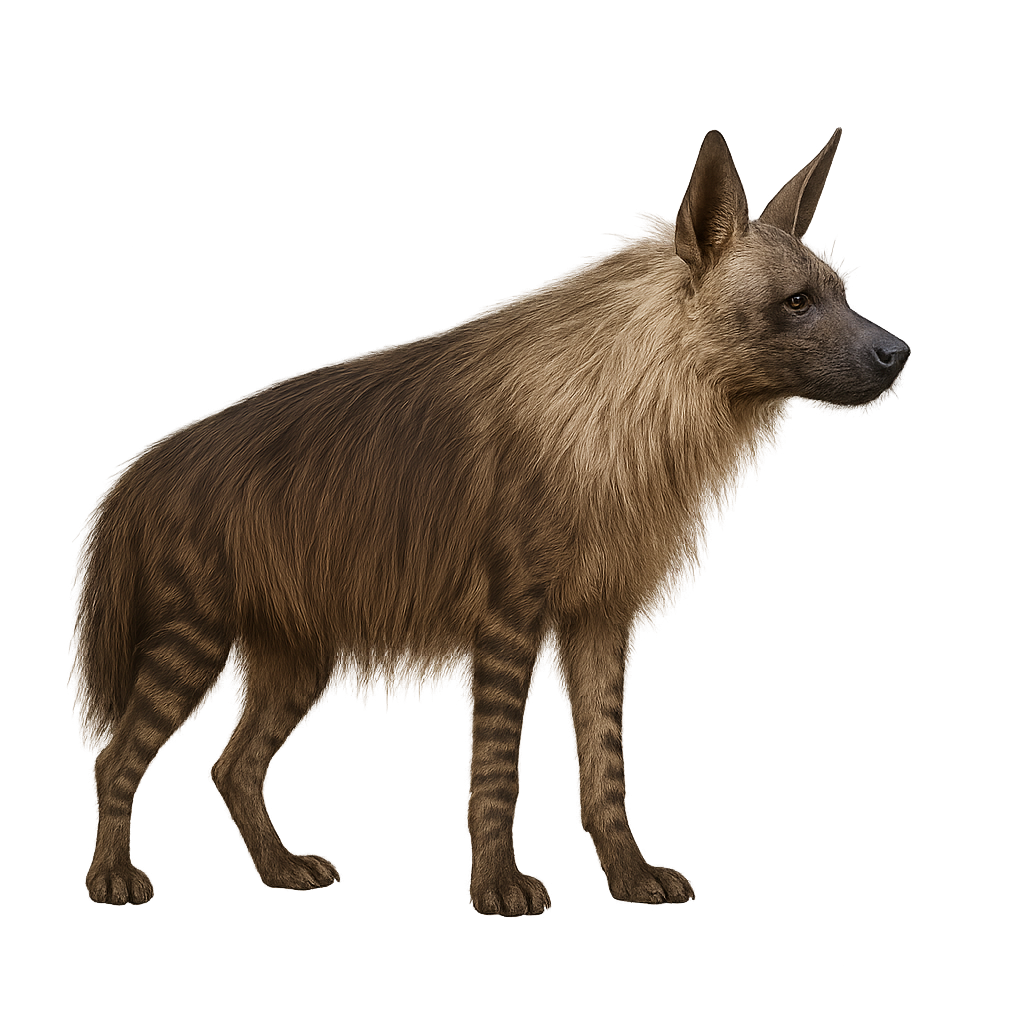Your wildlife photography guide.
Explore the brown hyena in detail, study its behavior, prepare your shots.
Where to observe and photograph the brown hyena in the wild
Learn where and when to spot the brown hyena in the wild, how to identify the species based on distinctive features, and what natural environments it inhabits. The WildlifePhotographer app offers tailored photography tips that reflect the brown hyena’s behavior, helping you capture better wildlife images. Explore the full species profile for key information including description, habitat, active periods, and approach techniques.
Brown Hyena
Scientific name: Parahyaena brunnea

IUCN Status: Near Threatened
Family: HYAENIDAE
Group: Mammals
Sensitivity to human approach: Shy
Minimum approach distance: 30 m
Rut period: June to August
Gestation: 90-100 jours
Births: September to November
Habitat:
Deserts, savannas, grasslands
Activity period :
Mainly active at night, generally discreet during the day.
Identification and description:
The brown hyena, scientifically known as Parahyaena brunnea, is a medium-sized carnivorous mammal, primarily nocturnal, inhabiting the arid and semi-arid regions of southern Africa. It is distinguished by its long, shaggy coat, ranging from dark brown to black, with lighter stripes on its legs. Its snout is pointed, and it has large, rounded ears. Unlike other hyenas, it is mainly a scavenger, feeding on carcasses left by other predators. It lives in small family groups but often hunts alone. Although its appearance might seem intimidating, it is generally shy and avoids human interactions.
Recommended lens:
400mm – adjust based on distance, desired framing (portrait or habitat), and approach conditions.
Photography tips:
To photograph the brown hyena, it is advisable to use a telephoto lens of at least 400mm to capture detailed images from a distance, as this animal is quite shy. Focus on twilight or nighttime hours to observe its natural activity. Be patient and discreet, blending into the environment to avoid scaring it away. Use a tripod to stabilize your camera in low-light conditions.
The WildlifePhotographer App is coming soon!
Be the first to explore the best nature spots, track rutting seasons, log your observations, and observe more wildlife.
Already 1 431 wildlife lovers subscribed worldwide

